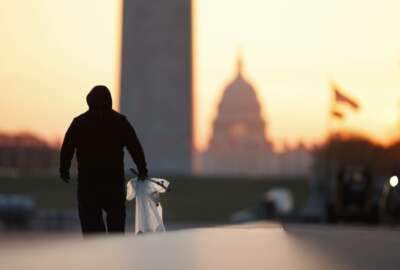NLRB ‘doing more with less’ between growing caseload, stagnating staffing
While trying to manage sluggish staffing numbers, NLRB has simultaneously experienced a sharp 35% increase in its workload over the last six months.
The National Labor Relations Board is at a crossroads: Within the same moment, the agency is trying to manage a growing caseload, while also dealing with relatively low staffing numbers.
In the last decade, NLRB field staffing has declined by a third, while in the same timeframe, the case intake per agency employee has surged by 46%.
“So, you can do the math,” NLRB General Counsel Jennifer Abruzzo said in an interview.
The lion’s share of NLRB’s casework gets handed to employees working in the agency’s field offices. They’re in charge of reviewing and processing incoming cases and petitions, but at the same time, those employees have been struggling to get enough staff on board to handle a continually rising workload.
To try to manage the increasing work, Abruzzo said NLRB is prioritizing hires in field offices, while also getting creative in the agency’s pooling of resources and other employees.
“We are using headquarters personnel more to assist the field with investigations and with litigation and with representation cases,” Abruzzo said. “A lot of our headquarters staff are researchers and writers, so that’s certainly within their skill set.”
In just the last six months, the disparity between workload and staffing has become even more noticeable. The number of union election petitions filed at NLRB field offices has risen 35%, in comparison with this time last year. In numbers, that’s 1,618 petitions filed, compared with 1,199 petitions last year.
NLRB is also seeing a spike in unfair labor practice (ULP) charges, which have risen from 9,612 to 10,278 between this year and last year — a 7% increase. Between both petitions and ULP charges, the agency has seen an increase of 10% in the workload at its field offices. A spike in both employer-filed and employee-filed petitions largely drove that uptick, NLRB said, as a result of a decision the agency made in August 2023 that gave more leeway to private sector unions.
The caseload has impacted staff burnout as well. In the 2023 Federal Employee Viewpoint Survey (FEVS), just 48% of NLRB employees agreed that their workload was reasonable, compared with 62% agreement governmentwide.
“We’re not seeing a mass exodus of folks [and] our board agents are as committed as they’ve ever been,” Abruzzo said. “But of course, they are doing more with less. And they are more stressed as a result of not only the increased caseload, but also of the more complex matters that we’re dealing with.”
In the long run, being able to handle all the work ultimately comes back to the agency’s budget, Abruzzo said, which has been a challenge at NLRB for years. For fiscal 2025, the White House is requesting $320 million, an increase that Abruzzo said would at least begin to help rebuild NLRB’s staffing capacity and address some of the agency’s immediate technology needs.
“But we really need over $400 million, frankly, in order to staff up appropriately, so we can address the needs of the public in real time, and improve our infrastructure, which not only includes our external website to make it more user-friendly, but also our internal electronic case filing system, which really is on its last legs,” Abruzzo said.
NLRB has received flat funding in nine of the last 10 years, but the agency did get a slight budget increase of $25 million during fiscal 2023, which let NLRB move past a hiring freeze and at least begin addressing some issues, Abruzzo said.
The agency isn’t alone in its challenges, either. For fiscal 2024, like many agencies, Congress opted to give NLRB a flat budget of about $299.2 million.
Moving forward, Abruzzo said it will require steadier and even higher budgeting to progress further, rather than just stay afloat.
“That just basically kept our lights on,” Abruzzo said. “It did not allow us to do the necessary hiring of critical positions that we needed, and it did not allow for us to upgrade our infrastructure. Our caseload continues to outpace our staffing capacity.”
Copyright © 2025 Federal News Network. All rights reserved. This website is not intended for users located within the European Economic Area.
Drew Friedman is a workforce, pay and benefits reporter for Federal News Network.
Follow @dfriedmanWFED






